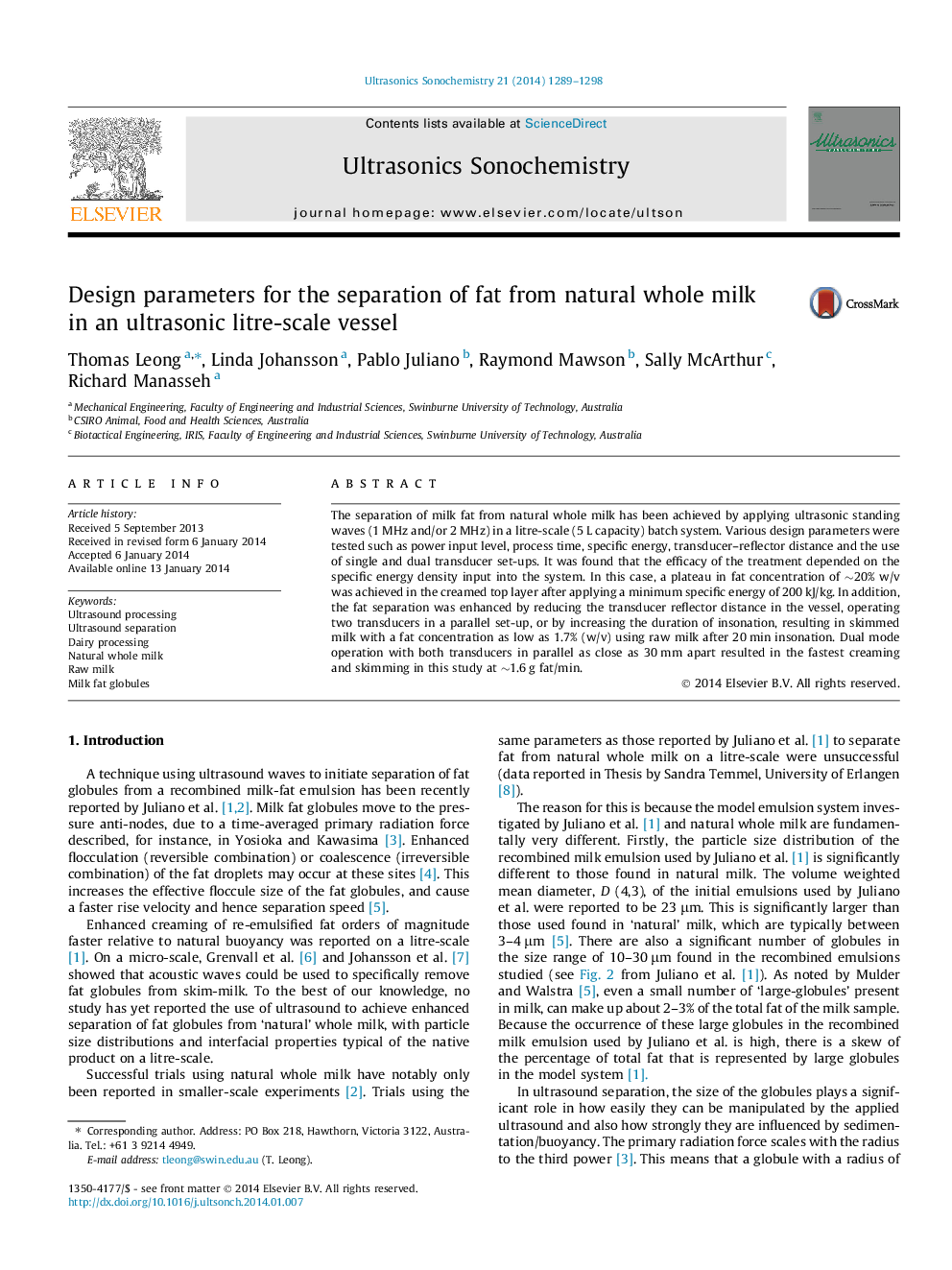| Article ID | Journal | Published Year | Pages | File Type |
|---|---|---|---|---|
| 1268957 | Ultrasonics Sonochemistry | 2014 | 10 Pages |
•Ultrasonic separation of milk fat from natural whole milk has been demonstrated only in millilitre scale systems previously.•Separation was enhanced in a litre scale ultrasonic reactor holding several transducer arrangements.•The duration of insonation, vessel dimensions, and specific energy input influenced separation.•Ultrasound application at parameters suitable for separation did not disrupt the integrity of fat globules.•This research identifies the key parameters to develop an ultrasonic milk fat separation device.
The separation of milk fat from natural whole milk has been achieved by applying ultrasonic standing waves (1 MHz and/or 2 MHz) in a litre-scale (5 L capacity) batch system. Various design parameters were tested such as power input level, process time, specific energy, transducer–reflector distance and the use of single and dual transducer set-ups. It was found that the efficacy of the treatment depended on the specific energy density input into the system. In this case, a plateau in fat concentration of ∼20% w/v was achieved in the creamed top layer after applying a minimum specific energy of 200 kJ/kg. In addition, the fat separation was enhanced by reducing the transducer reflector distance in the vessel, operating two transducers in a parallel set-up, or by increasing the duration of insonation, resulting in skimmed milk with a fat concentration as low as 1.7% (w/v) using raw milk after 20 min insonation. Dual mode operation with both transducers in parallel as close as 30 mm apart resulted in the fastest creaming and skimming in this study at ∼1.6 g fat/min.
